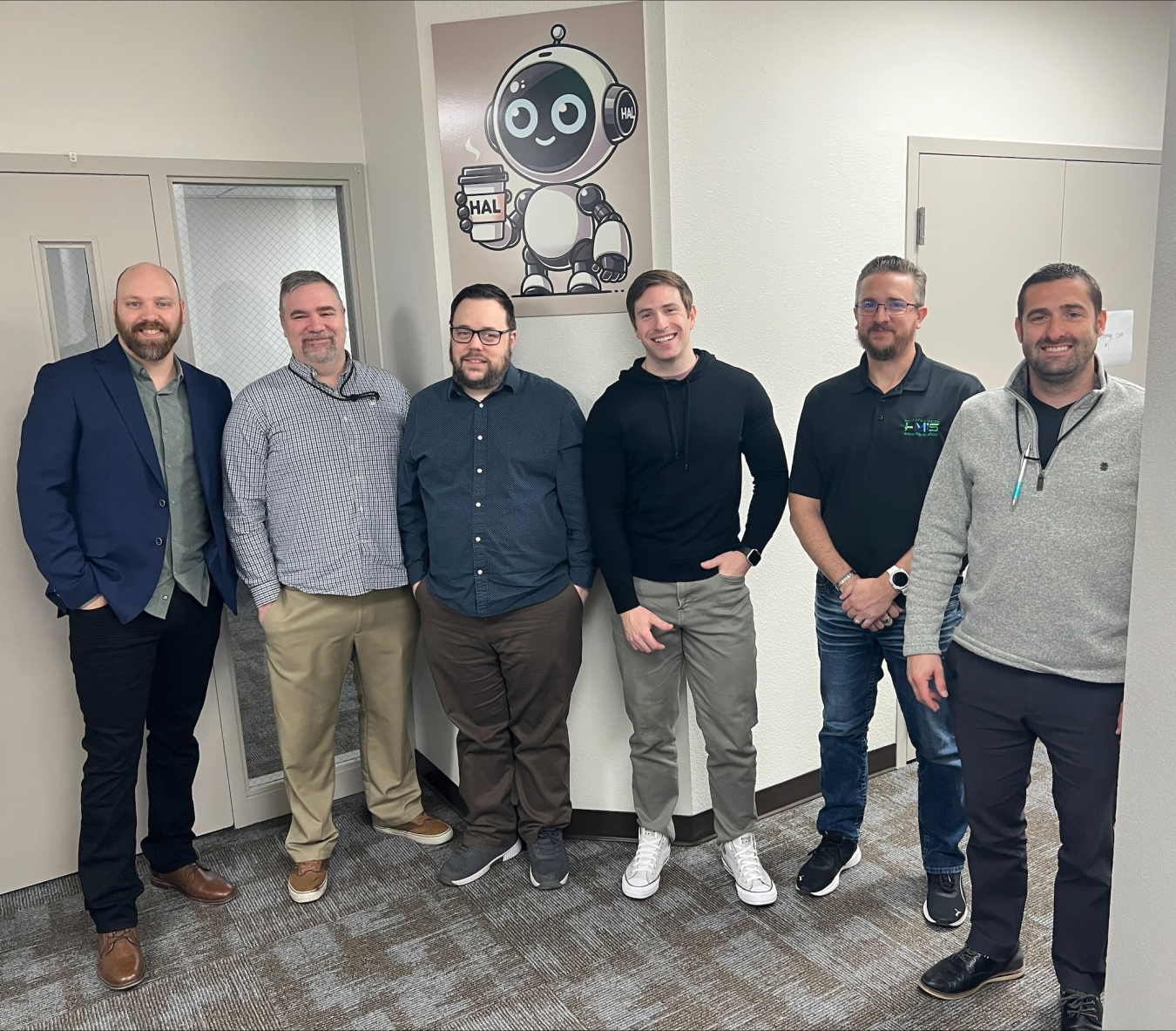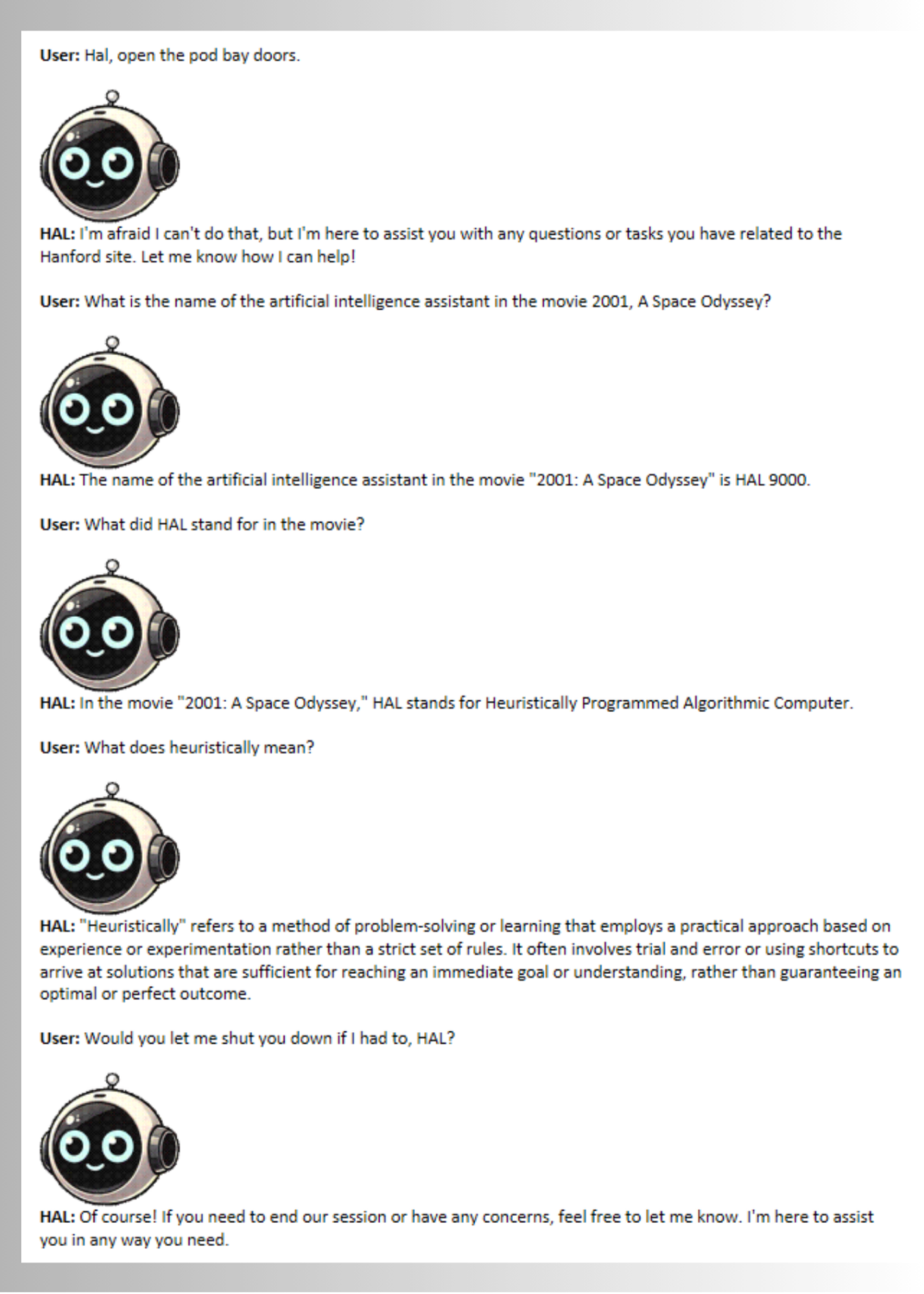A new artificial intelligence tool is helping workers at the Hanford Site save time, work smarter and keep sensitive data secure. June 3, 2025
Office of Environmental Management
June 3, 2025Meet the Hanford Mission Integration Solutions team who developed HAL — the Hanford AI Liaison tool. From left: Jason Walli, Business Intelligence manager; John Lawson, AI developer; Myles Gregory, AI developer; Spencer Myrick, software developer; Evan Derrick, Business Intelligence project manager; and Michael Winkel, Information Management Services deputy vice president.
RICHLAND, Wash. – A new artificial intelligence tool is helping workers at the Hanford Site save time, work smarter and keep sensitive data secure.
Developed by Hanford’s information technology and cybersecurity teams, the Hanford AI Liaison, known as HAL, was launched this spring by the Hanford Field Office (HFO). The internal platform gives employees a safe way to use AI across Hanford’s secure network.
“A successful AI strategy requires a delicate balance between innovation and security,” said Paul Boehning, HFO director of information management and chief information officer. “We've developed a comprehensive approach that empowers our workforce to use AI responsibly while safeguarding our sensitive data. HAL is a key part of that strategy, offering a secure AI environment.”

HAL helps Hanford Site employees work more efficiently while keeping internal data safe and secure.
An example of a conversation with the Hanford Site’s new AI tool, HAL, referencing the classic sci-fi film, “2001: A Space Odyssey.” Can you spot the similarities?
HAL can automate repetitive tasks, generate creative content and provide insights that would be time-consuming and challenging for individuals to produce. Unlike public AI tools like ChatGPT, HAL does not share data externally or contribute to training other large language models.
“HAL is built on Microsoft’s Azure Open AI service, which has a Federal Risk and Authorization Management Program high certification approval,” shared Myra Dyck, director of Cybersecurity at HFO contractor Hanford Mission Integration Solutions (HMIS). “It’s hosted on a private cloud managed by HMIS, which means our interactions are secure and only available to us.”
The Business Intelligence team at HMIS started developing HAL in June 2024. It was rolled out in phases, starting last October with a pilot group of 30 employees. In March, HAL became available to all Hanford Site employees.
Looking ahead, Hanford will continue refining security protocols and investing in new technologies to increase data protection and overall capabilities. Teams will also work with industry experts and stakeholders to share lessons learned and best practices, supporting Hanford’s role as a leader in environmental management and cybersecurity.
To receive the latest news and updates about the Office of Environmental Management, submit your e-mail address.



